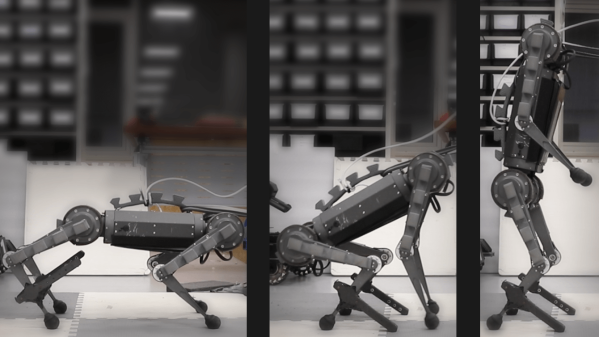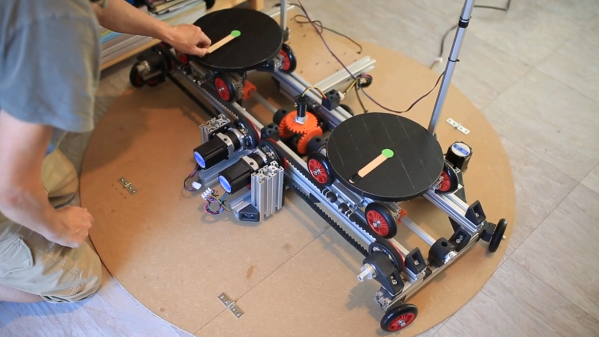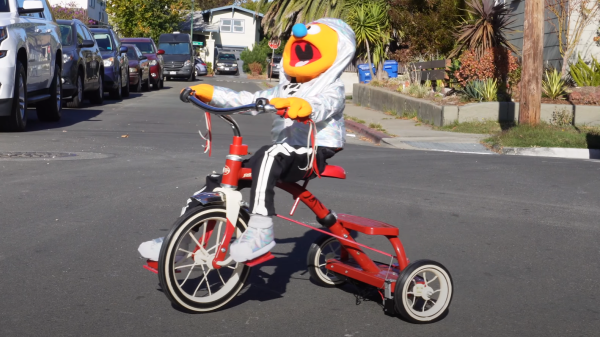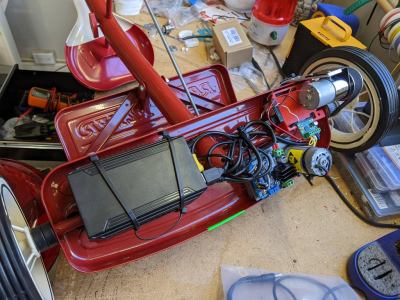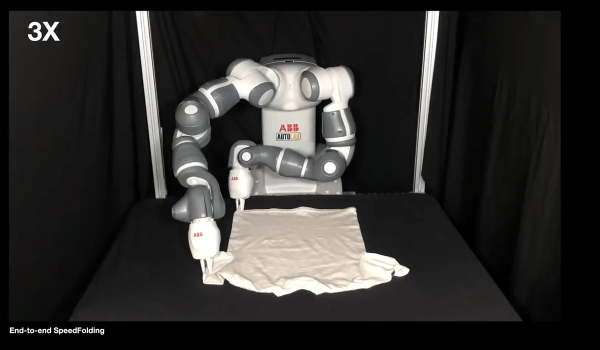When it comes to locomotion, robots don’t typically do more than one thing at a time. Walkers stick to walking, and rollers stick to rolling. However, this simple method of enabling a cheetah-style quadruped to stand and even walk a little is pretty clever.
With just a couple of rigid struts attached to the shins of the rear legs, it becomes possible for the robot to lever itself up into a stable standing position, and even shuffle around a bit. Not bad for a couple bolted-on bits with no moving parts!
The robot style will look pretty familiar to some of our readers. It does resemble Boston Dynamics’ Spot but it’s closer to the MIT Mini Cheetah, whose design and brushless motors made for eye-catching agility and speed. It has inspired not just countless DIY efforts, but also kits of parts from overseas sellers.
The image here should make it clear how it works, but take a moment to also watch the short video embedded just below the page break, and see the process in action from beginning to end.
Continue reading “Simple Mod Lets Quadruped Robot Stand And Walk”

